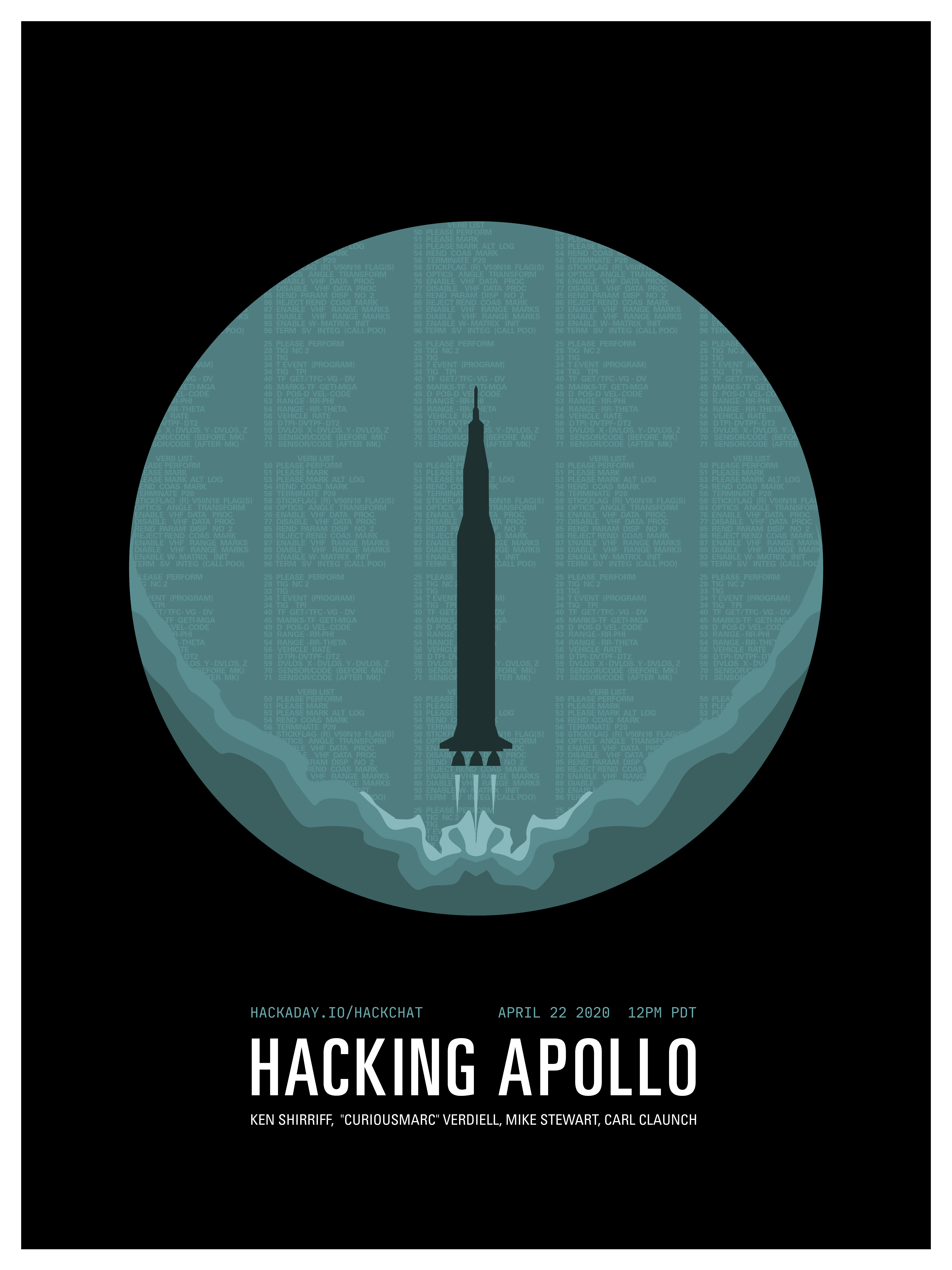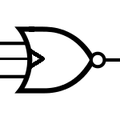The Apollo Guidance Computer team will host the Hack Chat on Wednesday, April 22, 2020 at noon Pacific Time.
Time zones got you down? Here's a handy time converter!

When President Kennedy laid down the gauntlet to a generation of scientists and engineers to land a man on the Moon before the close of the 1960s, he likely had little idea what he was putting in motion. The mission was dauntingly complex, the science was untested, and the engineering was largely untried. Almost everything had to be built from scratch, and entire industries were born just from the technologies that had to be invented to make the dream come true.
Chief among these new fields was computer science, which was barely in its infancy when the 1960s came along. By the end of the decade and the close of the Space Race, computers had gone from room-filling, power-guzzling machines to something light and capable enough to fly men to the Moon and back. The computers that followed all built on the innovations that came about as a result of Apollo, and investigating the computers of the era and finding out what made them tick is an important part of our technological culture.
That's where the retrocomputing Dream Team of "CuriousMarc" Verdiell, Ken Shirriff, Mike Stewart, and Carl Claunch come into play. Together, they've poked and prodded at every bit of Apollo-era hardware they could find, including a genuine Apollo Guidance Computer (AGC) that was rescued from the trash. What's more, they actually managed to restore it to working condition with a series of epic hacks and sheer force of will.
Marc, Ken, Mike, and Carl will stop by the Hack Chat to talk about everything that went into getting the AGC working again, along with anything else that pops up. Come ready to have your Apollo-era hardware itches scratched by the people who've been inside a lot of it, and seen what it took to make it to the Moon and back.

 I hate to do this, but we've been at this for an hour and if any of our guests need to get back to work, we should let them go. But this has been really fascinating, and I really want to thank Marc, Ken, Carl, and Mike for coming along today and sharing their insights and experiences. Feel free to keep the discussion going as long as you'd like, of course - the Hack Chat is always open.
I hate to do this, but we've been at this for an hour and if any of our guests need to get back to work, we should let them go. But this has been really fascinating, and I really want to thank Marc, Ken, Carl, and Mike for coming along today and sharing their insights and experiences. Feel free to keep the discussion going as long as you'd like, of course - the Hack Chat is always open.








